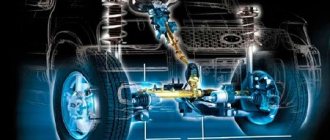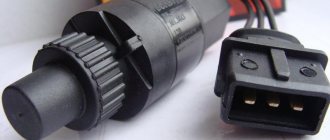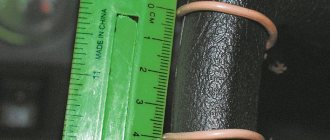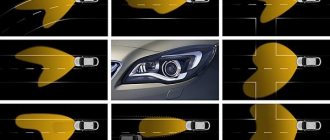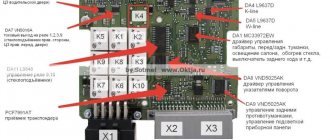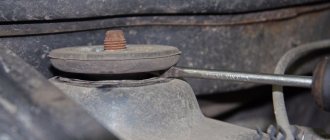Aggregatny carries out professional power steering repairs in a short time with a quality guarantee at affordable prices for: cars, trucks, buses, tractor units, light commercial vehicles, truck cranes, excavators, self-loaders, bulldozers, agricultural machinery, construction equipment, forklifts, municipal equipment .
Power steering is a device located as part of the steering mechanism, designed to increase the force on the steering wheel of cars and equipment, which makes steering easier - hydraulic booster. The power steering is capable of facilitating maneuvering and performs the task of ensuring vehicle stability on the road, as well as maintaining a given vehicle trajectory.
Hydraulic power steering (power steering) provides driver comfort when driving and increases road safety. If the hydraulic booster fails, it is possible to continue driving, but it will be difficult to turn the steering wheel. Therefore, power steering repair and maintenance must be timely.
Do you have questions about repairing hydraulic boosters (power steering pumps)? Call tel.
Our advantages:
- Modern equipment for diagnostics and repair. Special stands, professional diagnostic equipment and technological tools allow us to perform all work with maximum accuracy.
- Only original spare parts. We work with leading manufacturers on terms of direct deliveries from Europe.
- Always affordable prices. Repairing power steering is always cheaper than purchasing new components, and together with a warranty of up to 1 year, it is a particular benefit.
- Operational repair of power steering. We only have a couple of hours to repair faults. We will carry out any repairs quickly and with a guarantee of quality work.
- Certified services. The quality of our services is confirmed by the MADI test certificate, as well as annual inspections conducted by supervisory organizations.
- Everything you need is in one place! You quickly receive the full range of services in each of our centers. In case of repair under our warranty, you receive a new warranty period for the repair of the power steering!
Power steering repair
Figure 1 - Cross-section of an automobile power steering pump showing the main elements
The power steering pump (power steering pump) ensures that the pressure is maintained and the power steering fluid moves in the system. Currently, vane power steering pumps are common, they have high efficiency and are almost completely insensitive to wear. To prevent failure of the power steering pump, which is part of the steering system, you must:
- maintain an optimal oil level in the power steering reservoir;
- check the tightness of power steering components - hoses, connecting points, at maximum steering wheel positions (left-right);
- change the working fluid in the power steering system once a year.
Also, in order for your power steering pump to serve you for a long time, it is recommended not to hold the steering wheel in extreme positions for more than 5 seconds, which can lead to boiling of the oil and then failure of the system. If the power steering pump fails, it is not recommended to operate the car for a long time - this can lead to rapid wear of the steering parts, since they were designed for loads taking into account the power steering. Timely repair of the power steering pump will save you from possible consequences.
Diagnostics of the power steering pump - a guarantee for the entire unit.
Pump malfunctions: signs and causes
If we compare plate and gate devices, most engineers of well-known automakers prefer the former. They are simpler in design and therefore more resistant to wear and are suitable for repair. But if operating rules are violated, even the most reliable mechanism fails. Failure can be caused by:
- operation with critically low oil level;
- lack of control over the quality of the working fluid, untimely replacement;
- entry of foreign bodies, dust, dirt into the system;
- operation with high oil viscosity caused by high or low temperature.
You can diagnose pump failure yourself. The following signs indicate this.
- To turn the steering wheel at low speeds, you need to make more effort, which is quite noticeable. At high speeds, maneuverability remains at a certain level.
- Turns of the steering wheel, both while driving and when stopping, are accompanied by specific sounds.
- Engine oil leakage is visualized. There are drips on parts and under the car after a long period of parking.
- When removing the belt, play in the bearing is visible.
All of the above symptoms should lead to a full diagnosis of power steering. After the inspection, you can determine what to do: repair the power steering pump or change other components of the hydraulic system.
Diagnostics of the hydraulic booster (power steering)
Technical analysis of the performance of the power steering pump for compliance with the basic parameters declared by their manufacturers to identify faulty parts and parts that have a critical percentage of wear that negatively affects the further operational life. To carry out diagnostic work, it has all the necessary range of equipment and highly qualified personnel with many years of experience. At the end of the diagnostics, you can receive a diagnostic sheet, which indicates the required and recommended components for replacement due to the long depletion of the resource.
The pump is installed on a hydraulic test stand, where its overall performance, performance and developed pressure are checked, i.e. specifications. If the initial diagnosis reveals defects in the shaft, bearings or working pair, these parts are recommended for mandatory replacement. Next, the power steering pump is repaired.
Tips for diagnosing power steering
Diagnosing car faults is a separate type of work for any car service.
It’s good when a car service center undertakes to repair the identified faults after diagnostics. If not, then in the diagnostic results, he can write many completely non-existent faults, causing horror in the owner of the car!
One day, the diagnostic results of a Volvo car that came to the service center itself showed a malfunction: No gas tank! This is how the computer explained the increased idle speed. The diagnosticians could not explain the meaning of this malfunction :), but they took money for the diagnostics.
When a car service takes on the elimination of identified faults, this is already better. However, even here there is a danger of being left in the cold. Often one malfunction causes another, which is easy to eliminate. But if servicemen are dishonest, then by hiding the real reason from you, they may charge you more money for imaginary work supposedly required for repairs. It is especially dangerous to leave the car in a car service center unattended.
In this article, we want to warn our clients against wasting money and feeling like they have cheated you.
If you have knocking noises from the front of your car when driving
This does not always mean that the steering rack is knocking! If knocking occurs at low speeds, on bumps, then it is very likely that the anti-roll bar bushings are knocking!
This is a cheap rubber part that does not last that long - from 50 to 100 thousand kilometers, and which has to be changed on almost any car as a consumable item. Replacement costs and complexity are also usually low.
To check the stabilizer bushings, you can perform simple diagnostics yourself. The two of you need to open the two front doors of the car wide in a quiet room. And carefully, without applying much force (so as not to damage the door hinges), rock the car from side to side. If you hear knocking noises, it is almost certainly the anti-roll bar bushings that are knocking. The same malfunction can include defects in the anti-roll bar struts.
If knocking occurs at speeds above 50-60 km/h, then it is not the steering that is knocking! The fact is that when the car moves and the wheels rotate quickly, they develop a gyroscopic moment, which prevents impacts from the road from being transmitted to the steering wheel. And if knocking noises are present at speeds above 50 km/h, then this is not the steering, but rather a malfunction of the shock absorber struts, levers, etc.!
If the knocking still comes from the steering rack, then the cause may be worn steering rods, ends, or play in the steering column.
If you have a low fluid level in the power steering reservoir
This does not necessarily mean that the steering rack, or the pump, or anything else in the power steering system is leaking. The fact is that power steering fluid, like any fluid, expands when heated and contracts when cooled. In this case, the level in the tank will change. If you open the power steering reservoir on a cold car, then the level in it will be lower than it was on a hot engine earlier, and this means absolutely nothing. Of course, in any case, the level in the tank should not be below the minimum mark, and if this is not the case, then simply add fluid to the required level. Read what fluids can be added and mixed in the article Oils and fluids for power steering. Only if you have repeatedly had to add fluid, there is reason to worry about its leakage.
If you have a howling noise coming from under the hood
This does not always mean that the power steering pump is howling. These can be other units - a generator, a pump, a tension roller, an air conditioning compressor. There is one important sign by which you can identify a pump malfunction. If the sound is present all the time, including when you are NOT turning the steering wheel, then the power steering pump almost certainly has nothing to do with it. If the power steering pump malfunctions, the sound will appear and necessarily intensify only when you start to turn the steering wheel or even turn it all the way. The power steering pump comes into operation only when taxiing. The rest of the time it spins idle.
If your steering wheel starts to jam
This is not always the fault of the rack or power steering pump. This could be a simple jamming of the steering shaft driveshaft. Cardan joints are installed in places where the steering shaft is bent from the steering column to the rack. If moisture gets inside the cardan shaft bearings, it stops bending and stiffness appears on the steering wheel. The main sign by which we can confidently say that the driveshaft is to blame is that when the steering wheel is rotated, the force on it will become either more or less twice per revolution. Steering shafts can often be repaired rather than buying new ones.
If you have unsure control of the car when driving, you steer
This does not always mean there is play in the steering. The need for steering will also be observed in the case of “tightness in the trapezoid”. Those. Trapezium joints, including tie rod ends, suspension ball joints or support bearings have become too tight. This happens when moisture gets into a joint or bearing. In this case, a creaking noise may occur when the steering wheel rotates, coming precisely from jammed joints. If the creaking comes from the steering rack, then this is a completely different malfunction associated with damage to the geometry of the rack after an accident - a bent rack shaft or crankcase. Or corrosion inside the rack bushings.
If the car pulls to one side when driving
It is only in rare cases that the steering is to blame. In most cases, the problem is in the suspension itself - broken wheel alignment, castor, worn silent blocks, broken suspension geometry, not only the front but also the rear. You can distinguish a faulty rack from everything else in a simple way. Using this method requires understanding and caution, therefore Gidrolab is not responsible for the consequences of repeating this method yourself. If your car pulls to the side, you need to drive at low speed - 40 - 60 km/h. On a flat road, coasting in neutral, turn off the engine. Attention! Do not remove the key from the ignition!!! The steering wheel will become heavy after turning off the engine!!! If the car stops pulling to the side, then the rack is to blame. If it gets stronger, then the rake has nothing to do with it. Slowly brake and start the engine.
If your steering wheel shakes when braking
Especially from a speed of 160 km/h. (Joke)… I.e. just at high speed, or even at low speed - it doesn’t matter, but specifically when braking, this means..... ...that this malfunction has nothing to do with the steering. This is to blame for the brake discs, wheels, suspension, etc. If these parts malfunction or if the wheels are out of balance, the steering wheel may shake even when driving evenly at a speed of 80 to 100 km/h.
If the steering wheel becomes tighter when rotating in place, and at the same time it “dances” in your hands
Those. twitches when trying to turn it. Also, as engine speed increases, the steering wheel becomes lighter, and a whistle is heard from under the hood, especially when the car is not warmed up. Then it’s just the drive belt of the mounted units slipping. It needs to be tightened, changed, maybe even together with the tensioning device.
And finally, the steering wheel shakes or vibrates when the car is running...
... does not apply to steering malfunctions. In this case, you need to repair the engine or its mountings.
Gidrolab will accurately diagnose your steering system, fix problems and not impose unnecessary repairs.
Power steering pump repair
Figure 3 — Sectional view of the power steering pump
Repair of a power steering pump is work carried out based on the results of diagnostics to replace previously identified non-functioning parts with comprehensive cleaning of the power steering pump from contaminants and subsequent control diagnostics to ensure compliance with all performance parameters. The power steering pump being repaired is completely disassembled for troubleshooting. All parts are thoroughly cleaned. Bearings and seals are replaced with new ones. A full check is carried out for compliance with the manufacturer's requirements and, if necessary, non-conforming parts are replaced. When repairing the power steering pump, only original components are used. Repairs are carried out within 1-2 days, depending on the condition of the power steering pump. Restoring the power steering pump:
Restoration of the power steering pump is work carried out based on diagnostic results to replace pre-identified non-functioning parts and parts that have a critical percentage of wear that negatively affects the further operational life with comprehensive cleaning of power steering pumps from contaminants and restoration of the original appearance of all surfaces of housings and main components, followed by control diagnostics for compliance of all performance parameters.
One of the important areas of its activity is the restoration of broken power steering pumps. It's no secret that the automobile industry is one of the most significant sources of environmental pollution. Restoring power steering pumps significantly reduces environmental damage. Therefore, we offer our customers the opportunity to purchase a new power steering pump to replace the old one at a significant discount! We provide free delivery of a repaired power steering pump for corporate clients in Moscow upon prior request.
Removing and installing the power steering pump
Our car service provides a full cycle service: removal - repair - installation.
You can also bring us the already removed pump. We will carry out repairs with mandatory testing at the stand. You will pick up the repaired unit and install it yourself.
Car owners from the regions can use the services of a transport company to deliver power steering pumps to our service center.
When dismantling the pump, our specialists assess the condition of the drive belt and power steering hoses and, if necessary, make recommendations for replacing them. By agreement with the customer, it is possible to replace the drive belt with a new one (provided by the customer). If faulty power steering hoses are detected, we can offer the client the manufacture of a new power steering hose or repair of an old power steering hose.
The removed power steering pump is sent for washing and, after a visual inspection, a defect is carried out, during which the condition of the shaft, pulley, seals, and working pair of the pump is assessed. All parts undergo thorough cleaning in a special machine parts washing machine.
Mandatory procedures for defect detection:
- Cleaning all parts.
- Check the shaft for pockets of corrosion.
- Checking the condition of the working pair - the drum and lamellas.
- Checking the working surfaces of the pump - “mirrors”.
- Checking the condition of the shaft bearings.
- Checking the condition of the pressure reducing valve.
After the defect, a list of works necessary to fully restore the power steering pump is drawn up.
Warranty for repair of power steering pump
Warranties by type of work: for repair of power steering pumps - 6 (six) months warranty on all components used in the repair; for the restoration of power steering pumps. REM-ZON's warranty obligations are maintained subject to correct technical operation of the power steering pump by the consumer in accordance with the vehicle operating manuals (instructions) during the entire warranty period. Power steering is an important device found in the steering mechanism. Therefore, it is necessary to carefully operate the steering system of your car, as well as promptly repair the power steering (power steering pump repair).
Opel power steering diagnostic services
Diagnostics of the Opel power steering (power steering) must be carried out especially carefully, because steering faults pose a huge potential danger in the operation of the car. A car can break down at any time, in the most inopportune situation, and repairs can be quite expensive. Diagnostics of the power steering should be carried out by an experienced specialist who will not miss small nuances and will carry out preventive maintenance in a timely manner. To carry out the service, a competent specialist uses a special expensive device - a dynamometer-play meter, and a number of specific sequential manipulations.
